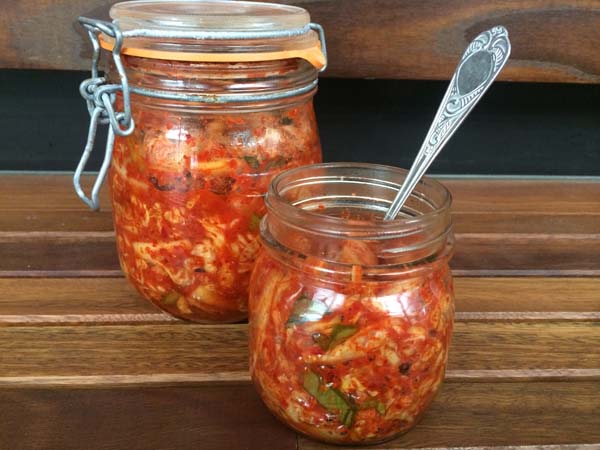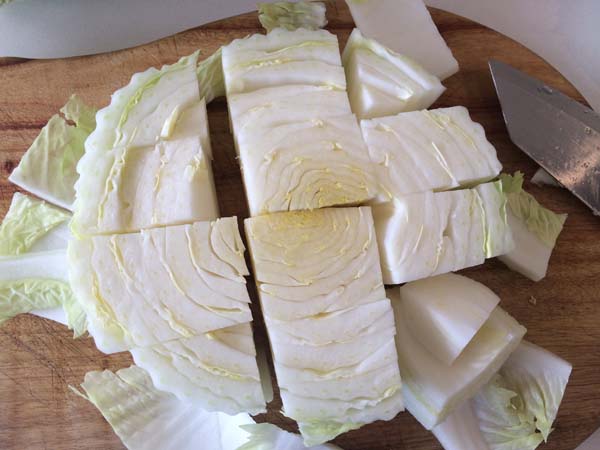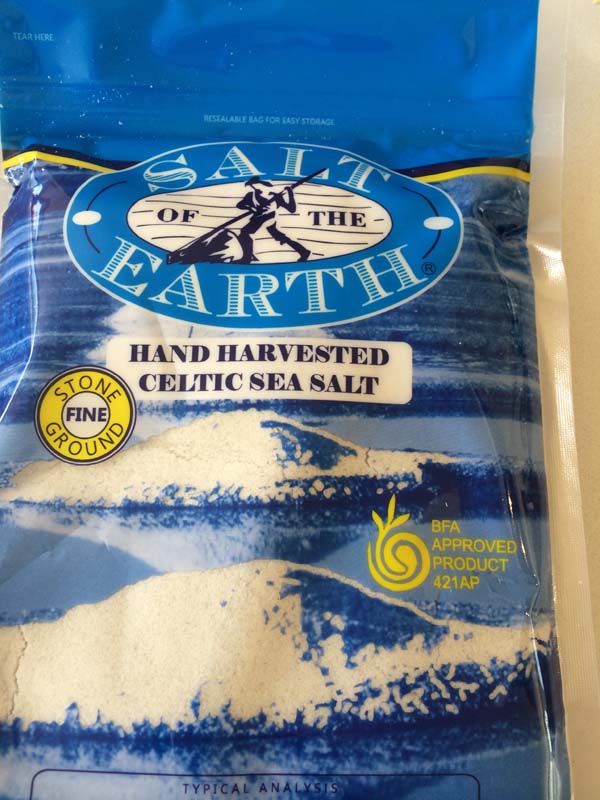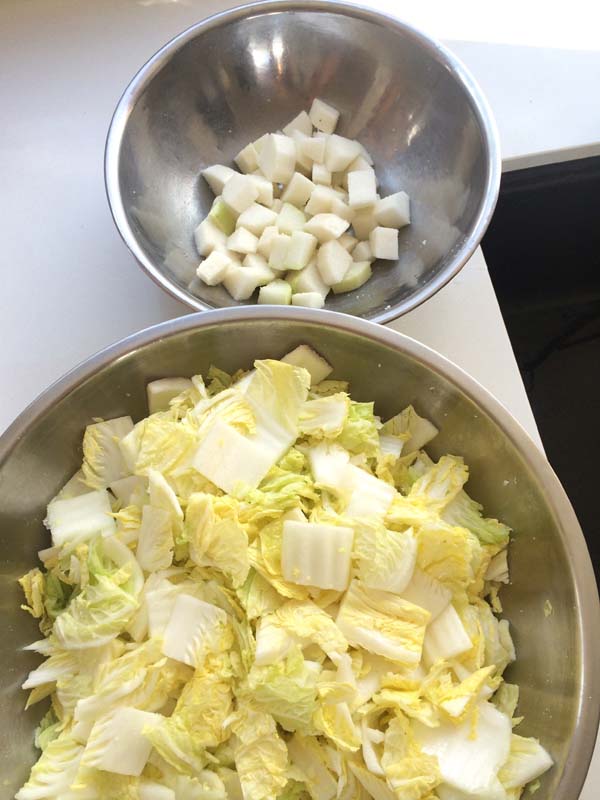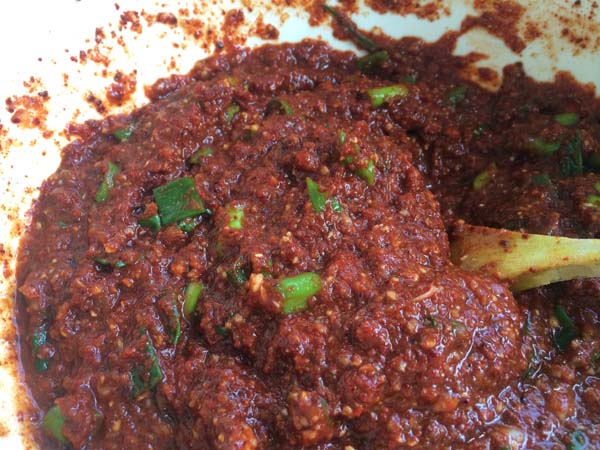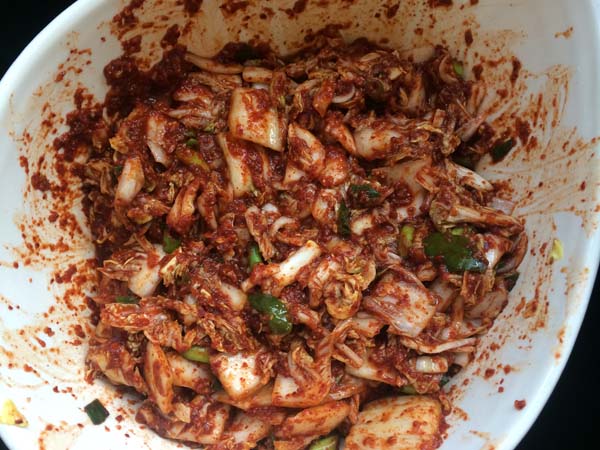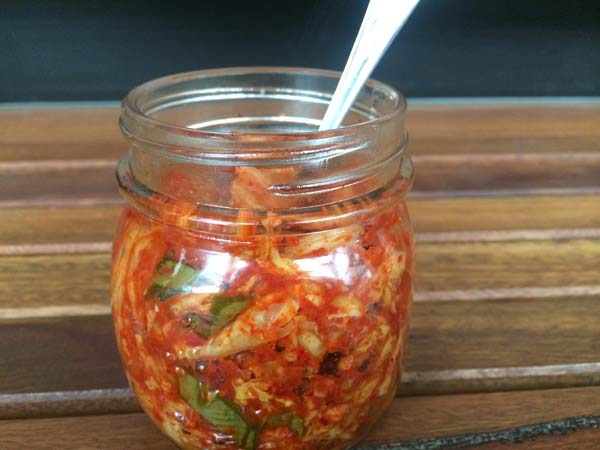During my days as a Taekwondo athlete, we spent a lot of time training in Korea. Two things were always the same each trip: training was gruelling and… there was kimchi.
These days I’m glad I don’t train that hard but I’m super happy I when I have kimchi.
Every day in Korea I ate kimchi for breakfast, lunch and dinner. It is a national dish in Korea and is served as a fermented pickle on the side at almost every meal. It is also incorporated into meals such as hot-pots, stews and pancakes. There are various types of kimchi but the one I am sharing with you is the most common and traditional version.
If you’ve never tasted kimchi before it takes a bit of getting used to, so start in small amounts but stick with it and you’ll be converted in no time!
When you land in Korea, the smell of kimchi permeates the air, it’s all you can smell until your nose adjusts, or you have had enough raw garlic yourself that you just can’t smell it. One thing I noticed during my time in Korea is the Koreans often eat for health and actively talk about life giving properties of their food, much more than we do here in Australia. They are very conscious about incorporating healthful food into their daily diet. They have a lot of fermented foods and many pickles served with each meal to help stimulate digestion, there are lots of tonic drinks you can buy at any corner news stand, most of which are ginseng or propolis and bowls of raw or pickled garlic are also common place alongside a meal.
Kimchi certainly has many health benefits, it is made by fermenting cabbage, garlic, daikon radish and spring onions with chilli and salt. Traditionally the kimchi mixture is placed in big clay pots and buried for months. Fermented foods have incredible digestive benefits and the onion and garlic act as pre-biotics which encourage good gut flora and digestive health. Garlic adds excellent immune boosting, antimicrobial and antibacterial properties. It is a wonderful accompaniment to a rice or noodle meal or with Asian style pancake or eggs for breakfast.
Traditionally kimchi recipes call for a large amount of coarse salt but although you rinse some of it off I just can’t come at using that much processed salt. I use less salt, leave it for longer (to soften the cabbage) and I use a good quality Celtic salt.
Kimchi
1 asian cabbage
1 daikon radish cut into cubes 2cm sq
Celtic salt ( 4-5 handfuls)
1 bulb garlic, peeled
1 small onion
1 large nob ginger (about 3cm)
¾ cup Korean chilli powder (You can get this at a Korean grocer. I have included a photo of the one I used)
¼ cup + 1 cup Water
1 tablespoon flour (You can use plain wheat flour or rice flour)
½ bunch spring onion (or one small bunch), washed and sliced into 2cm lengths
1 daikon radish cut into cubes 2cm squared or julienned. If I do cubes I usually keep the cabbage kimchi and daikon kimchi in separate jars but if I julienne the daikon I add it to the cabbage when salting.
Cut and rinse cabbage and daikon. Place in separate stainless steel bowls. Rub both daikon and cabbage all over with salt Leave to sit for 1-2hrs.
While cabbage and daikon are salting, place garlic, onion and ginger in food processor and mince to a paste In a separate bowl put chilli and 1/4 cup of water to make a paste. To this, add onion/garlic/ginger paste along with spring onions.
In a saucepan mix approximately 1 cup water with 1 tablespoon flour. Gently warm, stirring constantly until forms a paste (5 minutes). Combine the water/flour paste into chilli mix.
Lightly rinse the daikon and drain in a colander, followed by the cabbage. As I use such a good quality salt, I like to make sure not too much salt is washed off. If you do rinse most of the salt off you will need to add about 1 teaspoon of salt back into the chilli paste mixture.
Take a handful of the chilli paste mixture and add it to the daikon. Use your hands and rub it through, turning constantly for a few minutes. Do the same with the rest of the chilli mixture into the cabbage, making sure you really get the chilli mixture between the cabbage leaves.
Place daikon cubes and cabbage into separate large plastic containers or jars and let sit unrefrigerated for 1-2 days. If you are using jars, make sure you don’t fill them to the rim, otherwise as the kimchi starts to ferment and the carbon dioxide builds up, you lid might pop off and explode kimchi over your bench. Trust me, it’s happened to me before!! Refrigerate after the couple of days on the bench.
You can eat the kimchi after 1-2 days and it will last for months, changing in taste as it ferments. Ideally, it will be the best to eat after about 1-2 weeks, if you can wait that long! Kimchi can be served as a side dish or cooked into stews with tofu, meat or potato. It can be cut into strips and added to a basic pancake mix to make kimchi pancake.
Note: In this recipe I have separated the daikon and the cabbage so you will have 2 different kimchi. For the daikon, I have cut it into cubes (pictured above), which will give you a much crunchier kimchi. You can also just incorporate the two but if you do this, I would julienne or finely slice the daikon rather than have it in cubes.

